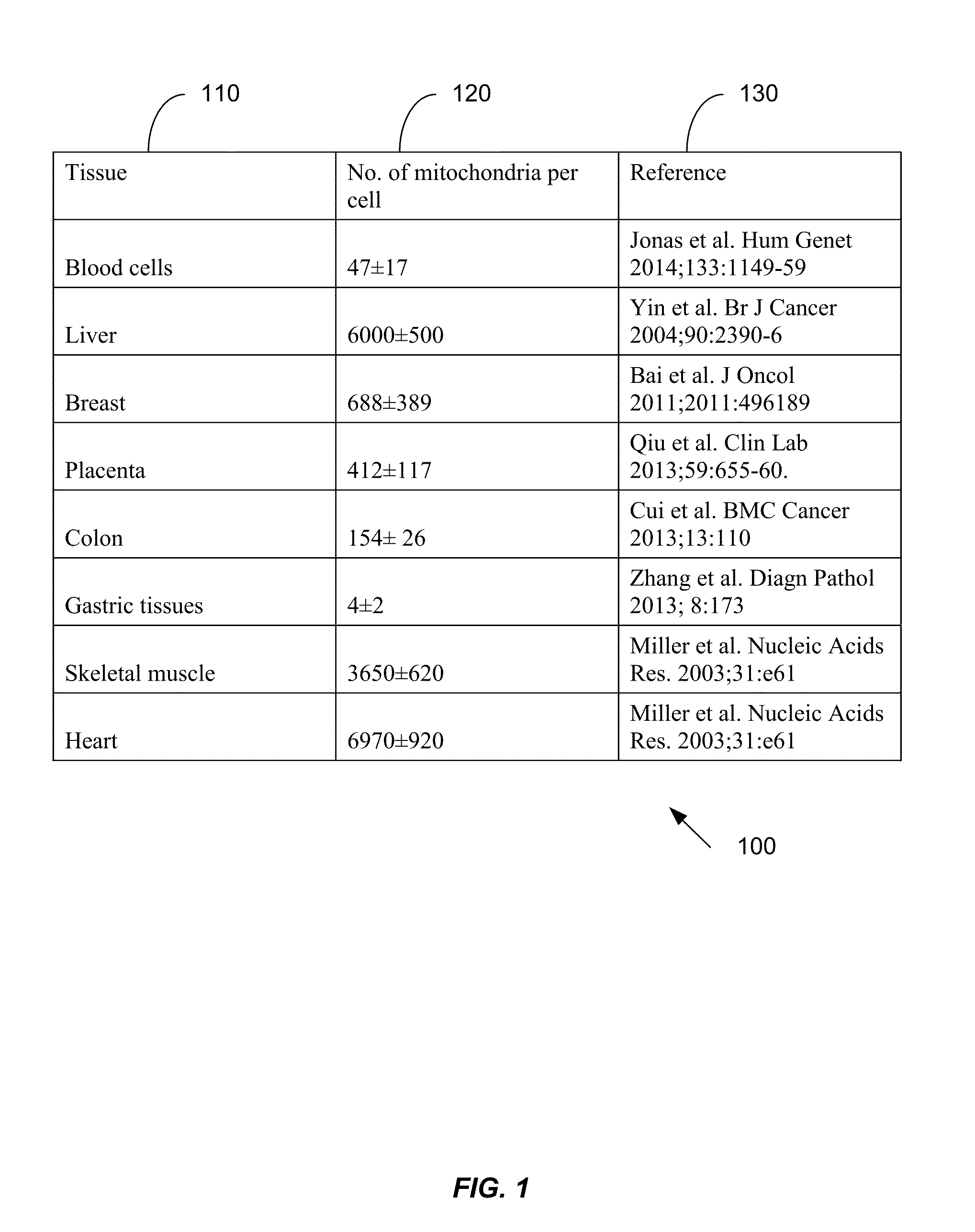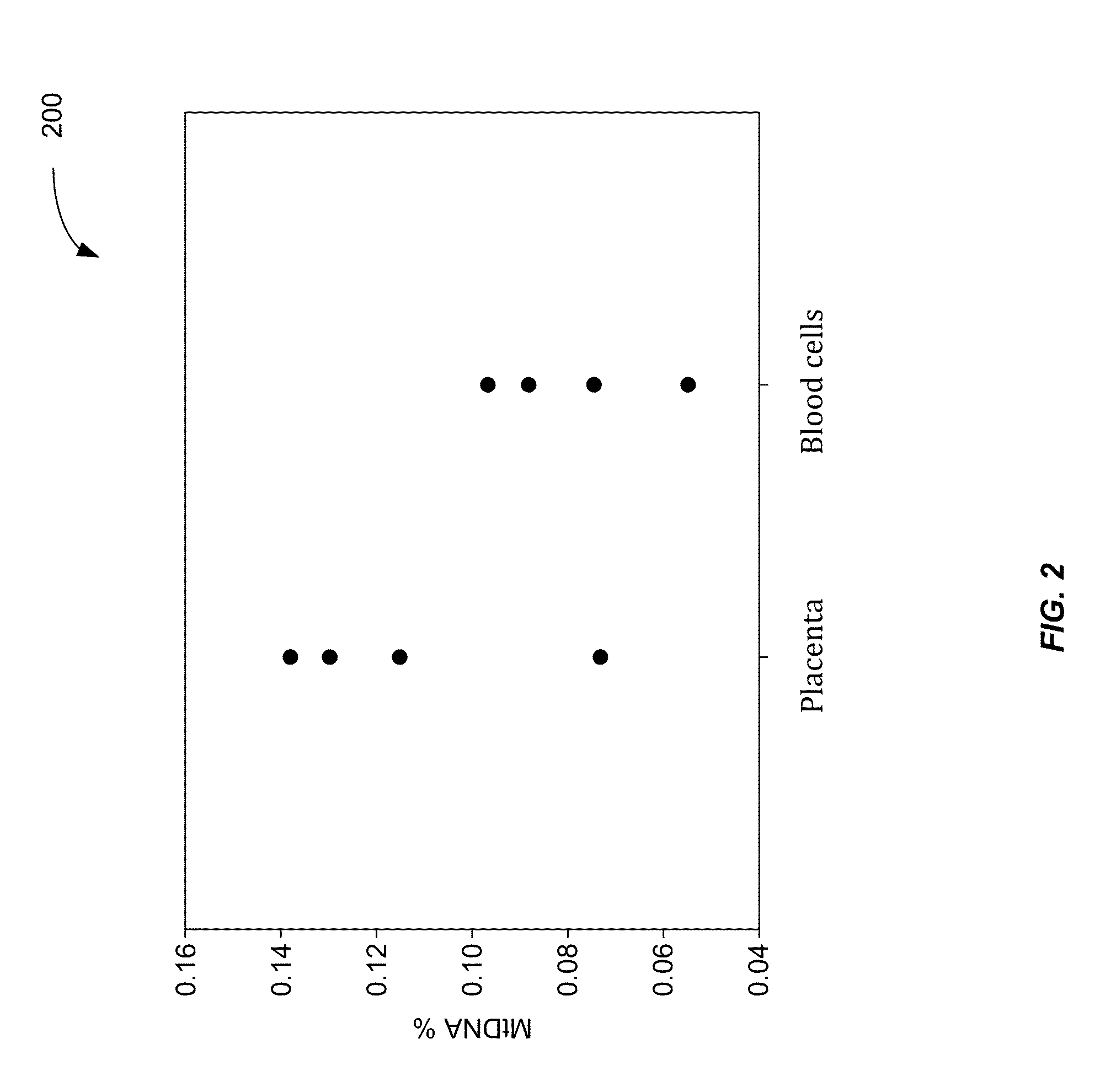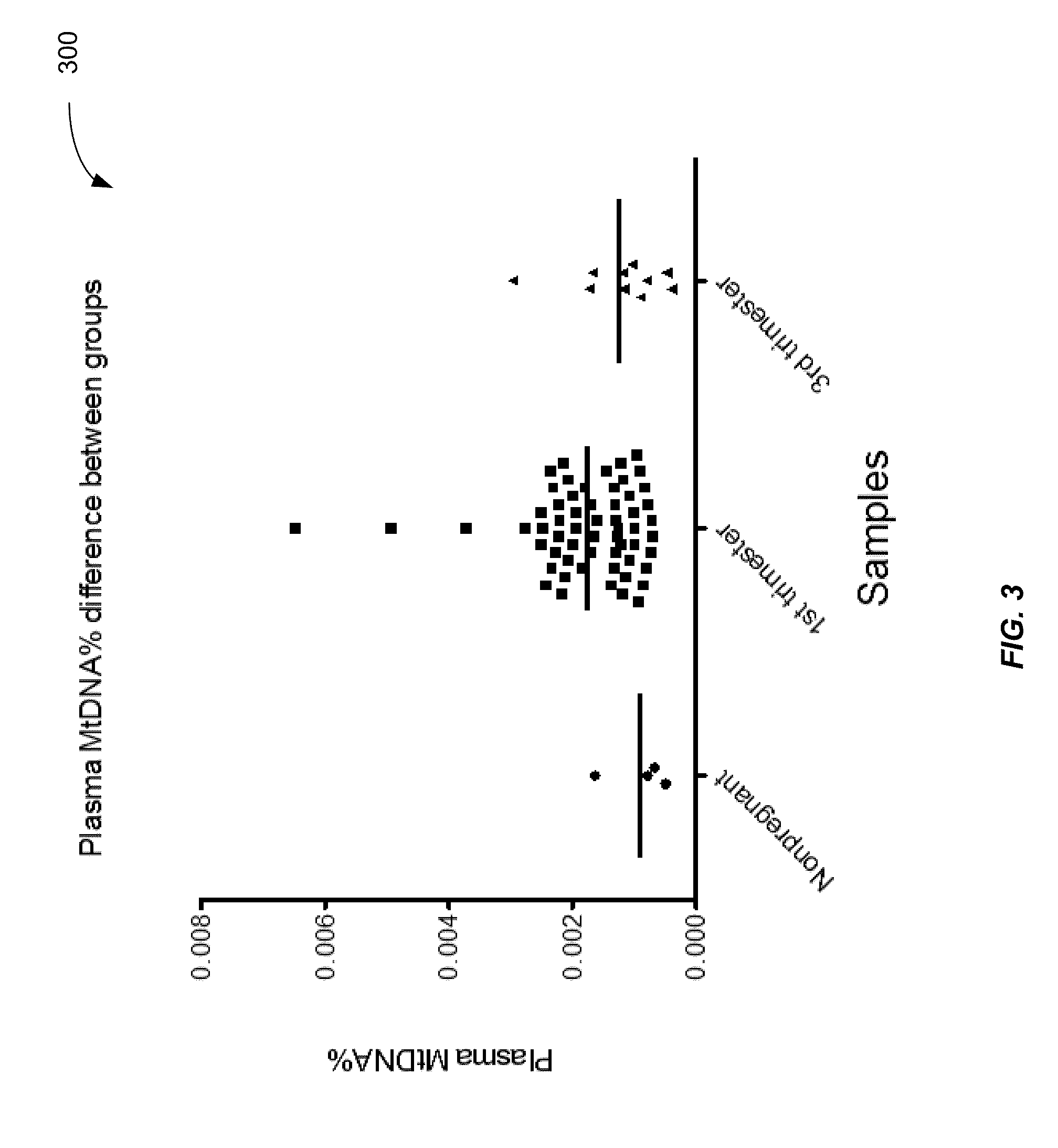Applications of plasma mitochondrial DNA analysis
a plasma mitochondrial dna and dna technology, applied in the field of applications of plasma mitochondrial dna analysis, can solve the problems of inconsistent measurement and limited use of mitochondrial dna quantification, and achieve the effects of accurately determining the level of auto-immune disease for the organism, and reducing the cost of such measurements
- Summary
- Abstract
- Description
- Claims
- Application Information
AI Technical Summary
Benefits of technology
Problems solved by technology
Method used
Image
Examples
Embodiment Construction
[0051]Embodiments have identified that a key source of plasma DNA is hematopoietic in origin. Hence, plasma DNA can be viewed as a combination of hematopoietic DNA plus other sources of clinically relevant DNA, e.g. fetal (placental) DNA in the plasma of pregnant women and tumor DNA in the plasma of cancer patients. Results below show that an amount of mitochondrial DNA molecules in a biological sample compared to an amount of nuclear DNA molecules can be used to estimate a fraction of fetal DNA in the sample. Further, a percentage of DNA that is from a non-hematopoietic tissue source can be determined.
[0052]In some embodiments, a random sequencing of DNA molecules can provide sequence reads that are used in a mapping procedure to both a reference nuclear genome and a reference mitochondrial genome. Whether a DNA molecule is mitochondrial DNA or nuclear DNA can be determined based on the locations that the sequence reads mapped. A relative amount of mitochondrial DNA in the sample c...
PUM
| Property | Measurement | Unit |
|---|---|---|
| Volume | aaaaa | aaaaa |
| Volume | aaaaa | aaaaa |
| Volume | aaaaa | aaaaa |
Abstract
Description
Claims
Application Information
 Login to View More
Login to View More - R&D
- Intellectual Property
- Life Sciences
- Materials
- Tech Scout
- Unparalleled Data Quality
- Higher Quality Content
- 60% Fewer Hallucinations
Browse by: Latest US Patents, China's latest patents, Technical Efficacy Thesaurus, Application Domain, Technology Topic, Popular Technical Reports.
© 2025 PatSnap. All rights reserved.Legal|Privacy policy|Modern Slavery Act Transparency Statement|Sitemap|About US| Contact US: help@patsnap.com



